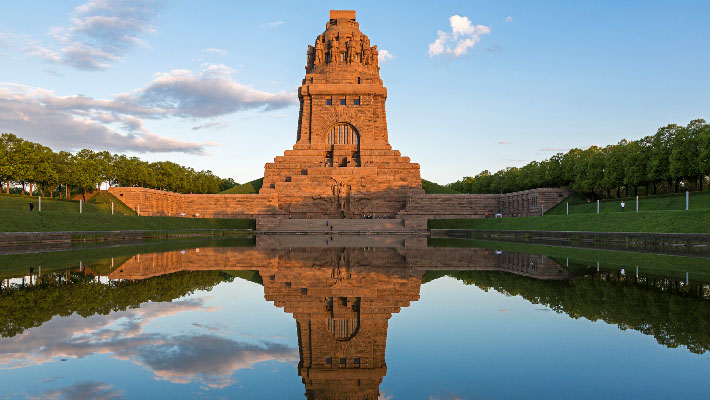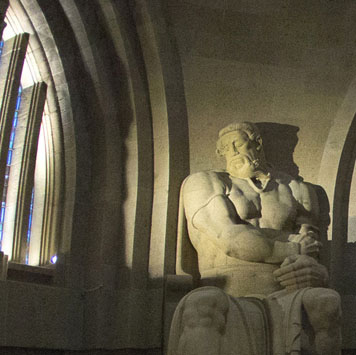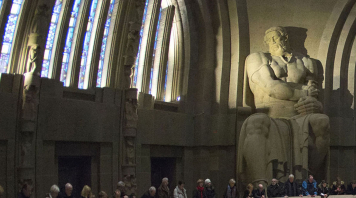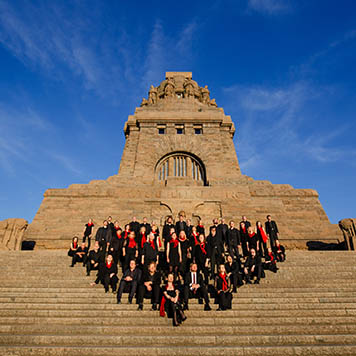
Völkerschlachtdenkmal
From October 14 to 19, 1813 Leipzig was surrounded by the largest open battle of the entire 19th century. In the so called Battle of Nations (Völkerschlacht) the armies of Russia, Prussia, Austria and Sweden achieved the decisive victory over Napoleon’s troops on German ground. Of approximately half a million soldiers fighting on the outskirts of the city every fifth died on the battlefield.Numerous efforts to mark the battle with a monument failed due to insufficient funding. Only the »Patriotenbund« (society of patriots) founded in 1894 by the Leipzig architect Clemens Thieme managed to gather the means for the construction of the monument. The plans for the gigantic project were drawn by the prominent architect Bruno Schmitz. The first spade was turned on October 18, 1898. 26.500 granite-porphyry blocks were used to clad the core walls made of tamped concrete. After a building time of almost 15 years Europe’s to date largest monument was inaugurated on the 100th anniversary of the Battle of Nations on October 18, 1913.136 steps go down to the crypt of the building, which is designed as a symbolic tomb for the fallen troops. In the Hall of Fame above, four stone giants allegorically stand for character attributes: courage, faith, strength of nation, and the readiness to sacrifice oneself. An impressive dome covers the structure at a height of 68 meters. Thanks to the particular acoustics, concerts in the hall have their very own appeal and are a special treat for music lovers. Between 2003 and 2013 the monument was thoroughly restorated, that it shown in its old slendour during the 200th anniversary of the Battle of Nations in 2013.
Address
Straße des 18. Oktobers 100
04299 Leipzig
www.stadtgeschichtliches-museum-leipzig.de
Public transport
Tram line 15 (Völkerschlachtdenkmal stop)






